When I first moved to Idaho, nearly a quarter of a century ago, I was fascinated with the state’s wild heart. Home to the largest wilderness area in the Lower 48 (the Frank Church-River of No Return Wilderness — the genesis of mighty Salmon River), and the most roadless acreage of any state in the Union, save for Alaska, I was awash in a desire to see it all.
Of course, that’s a pipe dream. While I’ve seen my good share of Idaho, much has eluded me, and as I get older, realization is setting in. I’ll never see it all. I’ll never get enough. But there are corners of Idaho that I’ve seen that have eluded most everyone else. That’s some solace, I suppose.
And, of course, when I arrived here at the tail end of the 1990s, I’d heard of the state’s storied rivers. On a job interview, prior to moving here as a transient journalist, I talked a newspaper editor into floating me down the South Fork. One of the first things I did when I arrived a year or so later was boldly march into the Railroad Ranch on the Henry’s Fork, just to see what all the fuss was about.
Predictably, I left with a hefty respect for the river’s big trout that were clearly much smarter than I was. And I’ll freely admit that they’re still pretty damned smart. They’ve made me a more patient and thoughtful angler, though, and I can usually hold my own on that river.
But — and I’m trying to figure out how to put this without upsetting a lot of my fellow Idaho anglers or disillusioning aspiring Idahoans who want to come here to experience those “bucket-list” fisheries — that’s not the real Idaho.
The real Idaho doesn’t start and end with a drift boat hatch in a tailwater river. Nor does it show up as a fabled river that’s nearly hammered to death every summer by anglers who just have to try their luck in fly-fishing graduate school.
The real Idaho? It’s somewhere approaching the state’s middle, away from the ever-encroaching ooze of hip from places like Jackson Hole or Sun Valley. It lies not so much in a geographic locale, but rather somewhere with some notable Western funk … somewhere where we haven’t messed around too much, or thrown things too far out of whack.
If someone were to tell me that Mackay, Idaho, is the real Idaho, I’d have a hell of a hard time disagreeing. And if that same someone were to tell me that the Big Lost River is the fishery that anglers are looking for when they think about what Idaho is like from afar, well, I’d agree with that, too.
Now, don’t misunderstand. The Big Lost isn’t some perfect trout stream as it flows off the shoulders of the Pioneers. It’s austere trout habitat that likely fishes best early in the season when the big cutthroats and rainbows run up from the lower reaches of the upper river above Mackay Reservoir to spawn. High summer in the Big Lost high country isn’t really for anglers so much as it is for folks who just want to get lost. It’s born from remote freestone “cricks” with names like Wild Horse and Star Hope. In the heart of Copper Basin, where these little streams come together and make the Big Lost, it feels like the set of a forgotten John Wayne flick. Even today, some 25 years after first venturing into its upper reaches, the Big Lost remains mostly a mystery to me.
But it’s such a cool mystery.
How so? Well, to be honest, the Big Lost shouldn’t be a trout stream at all. Technically, the river’s only native salmonid is the lowly mountain whitefish. And these whitefish are special. That’s because the Big Lost and a few other streams that flow from the Centennials, the Pioneers, the Boulders and White Knobs are “sinks” drainages–they literally disappear into the sand of the Snake River Plain. They never ever meet another river. That means that for thousands upon thousands of years, the mountain whitefish of the Big Lost have evolved on their own, with no genetic refreshment from whitefish in rivers like the Snake or the Wood.
These fish, for millennia, were on their own.
And then Idaho happened. Mining and timber operations showed up in the late 1800s. The river was dammed above Mackay, and the poor old Big Lost whitefish suddenly had company. Well-meaning fisheries managers introduced non-native rainbows and equally non-native Yellowstone cutthroat trout. Browns and brookies were brought in, too,, and the whitefish of the Big Lost started to go away.
And then progress took its toll on the introduced trout, too, with fish ending up in hayfield irrigation ditches or worse, stranded in puddles as the river was dewatered and diverted for agriculture. About 40 years ago, the Idaho Department of Fish and Game started an effort to decode the mysteries of the river and, with any luck, work with irrigators and water districts along the generally remote waterway to do everything they could to keep fish in the river. The effort was largely a monitoring one, but, with help from private landowners, nonprofits and federal agencies like the U.S. Forest Service, a few ditches have been screened and some diversions have been improved to keep fish from becoming “entrained.”
Some ditches aren’t screened, but F&G and USFS staffers dredge the ditches with electrofishing gear every year and put the fish back in the river. It’s a labor-intensive process, and, frankly, the river and its fish deserve better (but these efforts may have put off the demise of the Big Lost’s special whitefish–more than 13,000 of the native fish have been “salvaged” from certain death in irrigation ditches over the years).
And the efforts have, for better or worse, worked. In 2012, Fish and Game documented about 200 trout (not whitefish, mind you) per mile. In 2022, that number had jumped to about 800 trout per mile. Keep in mind, the Big Lost isn’t exactly “big” water. It’s miniscule when compared to the South Fork or the Henry’s Fork, so 800 trout per mile is actually pretty respectable. And Fish and Game is probably most pleased with the fish numbers that are turning up above the reservoir, which historically rises and falls at the whims of irrigators every year.
Over time, it might appear to the average angler that F&G has turned the Big Lost into a grand experiment. First, cutthroats and rainbows were introduced to “enhance” the fishery. Then, the popular Hayspur strain of rainbow trout was introduced into Mackay Reservoir, where they grew big and burly. Eventually, folks started calling them Mackay Magnums because of their propensity to leap from the water as if they were shot out of a gun. Then, as efforts ramped up to remove non-native rainbow trout from the South Fork of the Snake River–about 100 miles east–the department started relocating those fish to the Big Lost.
Fish and Game appears dead-set on its current course, as high-maintenance as it is. And the results are promising, even as the purist that still dwells deep in my soul and wonders what it would be like if the river was never manipulated and if the river’s whitefish were left alone to prosper. But that’s just not the Idaho way, damn it.
The Idaho way? The heavy hand of human manipulation continues to play its role. And Fish and Game will play its role, too.
“We believe that through fish salvaging and changing stocking practices we have been able to boost the number of fish in this fishery and improve fishing for anglers,” reads a recent department press release. “We will continue practicing fish salvaging both upstream and downstream of Mackay Reservoir, stocking Yellowstone cutthroat trout, and translocating South Fork rainbow trout to the upper Big Lost River basin to make fishing better for Idaho anglers.”
And that may be the most Idaho explanation anyone can offer. In a state that remains, in large part, an undisturbed paradise, the prevailing notion hasn’t changed much over the last 40 years. The “we can make it better” approach has some support–the angling community in the Gem State loves the Big Lost, both above and below the reservoir. And anglers clearly love those famous Mackay Magnums and now those South Fork rejects and the continued plantings of non-native Yellowstone cutthroats.
But where’s the love for the whitefish? It might be the most Idaho fish of them all.




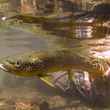
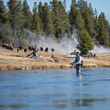

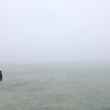




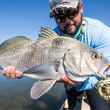



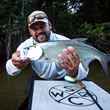
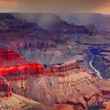








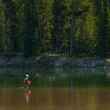
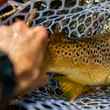

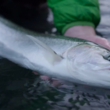
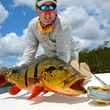
Comments
Mark van Roojen replied on Permalink
Whitefish live in clean water throughout the west, though not in abundance so far as I can tell. I believe the second fish I caught on a fly was a Whitefish on the Clackamas River in Oregon 40+ years ago. More recently I have caught them on Battle Creek in Southern Wyoming West of the Divide. It is a wonder that a mouth that small can eat a fly. I gather their presence tells us that the water itself is still in good shape, though there are other threats besides water quality.
Pages